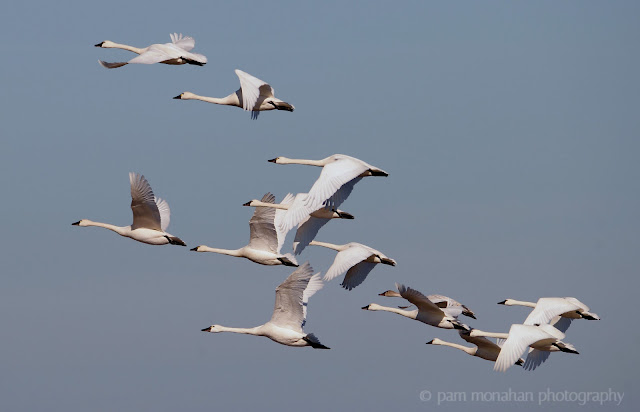One of the prettiest Winter visitors we have in our area is the Tundra Swan, also known as the “Whistling Swan.” Tundra Swans are very large waterfowl with heavy bodies and long necks. The adult swans are all white. The bill is mostly black and usually has a yellow spot at the base. The legs and feet are black. Immature birds are gray-tinged on the wings, head, and neck. They migrate down here from their breeding grounds in the Arctic tundra, thousands of miles. Tundra Swans form life-long pairs that remain together year round. Migrating flocks (of up to 100 or more) are made up of family groups, a scientific fact that I find very appealing. Tundra Swans can take off easily from land or water and fly with their necks extended straight out and their black legs trailing behind. I have seen these bird families many times at Back Bay National Wildlife Refuge in VA Beach and at Mackay Island National Wildlife Refuge, just over the Virginia line in Knotts Island, NC. The thrill of seeing them never gets old. It is a true sign of Winter for me.
You can often find them mainly on shallow lakes, wide slow-moving rivers, and coastal estuaries, especially those with agricultural fields nearby. They migrate as far South as South Carolina. Destruction of southern wetlands has reduced its former food sources in wintering areas, but it has adapted by shifting its habits to feeding on waste products in agricultural fields, such as corn, soybeans, and rice. They also feed on growing winter crops such as winter wheat, rye and barley. In the Chesapeake Bay Tundra Swans use their bills and feet to root up clams from the muddy bottom. When feeding on the water Tundra Swans “tip up” like dabbling ducks to reach submerged vegetation. It’s quite comical watching a bird this size do that!
So, when you are out and about and you hear some “whistling,“ look up! It just might be a family unit of Tundra Swans!

No comments:
Post a Comment